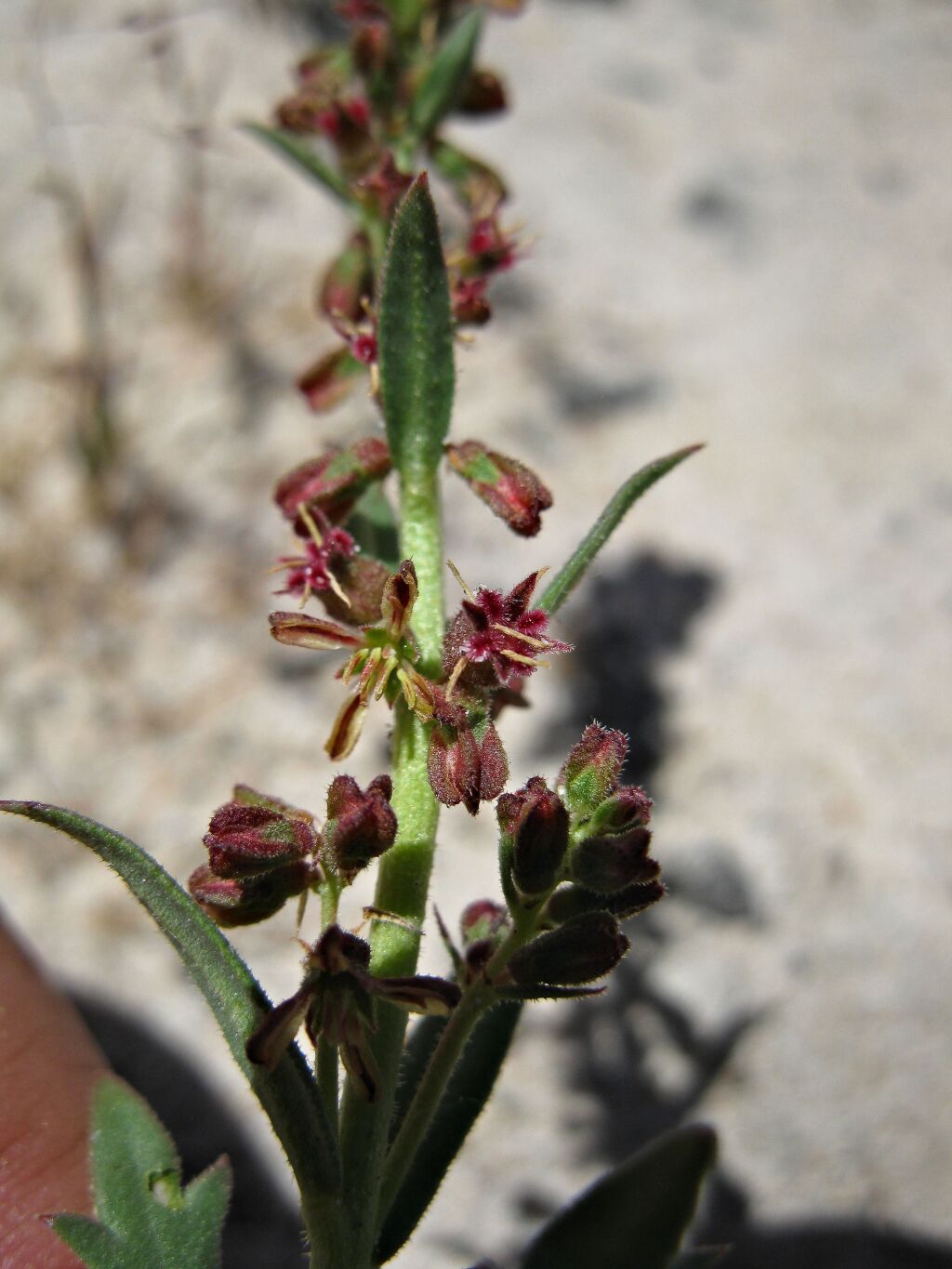Haloragis aspera
Lindl. Rough RaspwortPerennial herb 12–35 cm tall, procumbent or erect; rootstock deeply rhizomatous; stems annual, smooth, with spreading uncinate 2–4-celled hairs. Leaves alternate, lanceolate to narrow-ovate, 0.7–4 cm long, 4–15 mm wide, scabrous, sessile, subglaucous, margins thickened, entire or coarsely dentate; bracts lanceolate to narrow-ovate, 2–17 mm long, entire or serrate, scabrous; bracteoles linear, 1.2–1.4 mm long, entire, white to brown. Inflorescence 3–5-flowered; pedicels 0.1–0.2 mm long; sepals 4, green, triangular, 1.5–1.7 mm long; petals 4, green to red, 2.1–4 mm long; stamens 8; ovary 4-celled, globular, 1.4–1.5 mm long, smooth, scabrous, styles 4, stigmas red-purple. Fruit globular to pyriform or ovoid, 1 to 3 per axil, 2.5–3 mm long, 1.8–3 mm diam., silver-grey to reddish-brown, weakly 4–8-ribbed in upper half, lower half verrucose, glabrous or scabrous. Flowers mainly Oct.–Mar.
LoM, MuM, Wim, GleP, VVP, VRiv, MSB, RobP, MuF, GipP, OtP, WaP, Gold, CVU, GGr, DunT, NIS, HSF. Also NT, SA, Qld, NSW, ACT, Tas. Naturalized in New Zealand. Widespread in drier inland parts of Victoria where it favours disturbed areas, especially on heavy soils near waterways or seasonally inundated sites.
Intergrades, possibly hybridizes, somewhat with H. heterophylla and H. glauca.
Common on agricultural land where it is a troublesome weed due to its deep stoloniferous rootstock.
Jeanes, J.A. (1996). Haloragaceae. In: Walsh, N.G.; Entwisle, T.J., Flora of Victoria Vol. 3, Dicotyledons Winteraceae to Myrtaceae, pp. 887–908. Inkata Press, Melbourne.
 Spinning
Spinning



